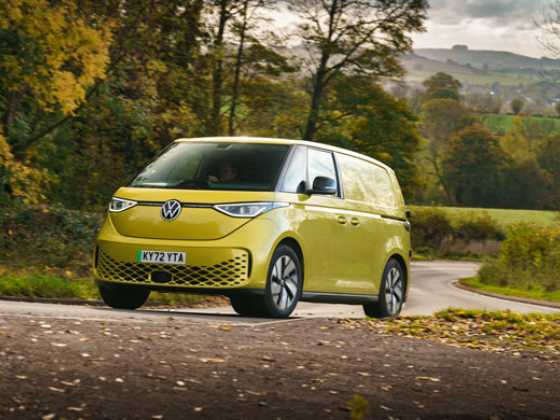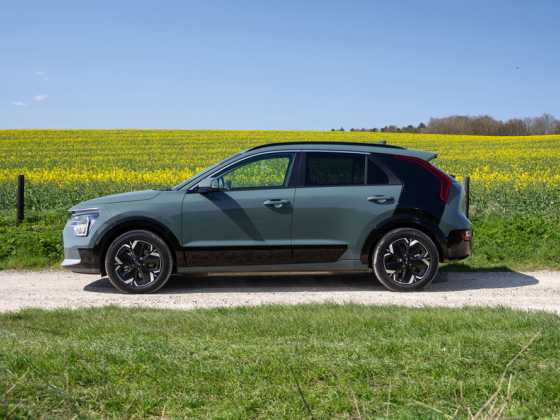What’s in a name?
Determining whether a car name is important or not has some relevance to Iain Robertson, who believes that rather than a nondescript ‘i’, the most compact and cleanest of Mitsubishi models should be called ‘incisive’
 Naming consumer products is a strangely beguiling business. It is certainly a big business and is fraught with huge lawsuits and almost obsessive protection of legal copyright. Registering a product name can take a long time and there are frequent issues rearing their heads because companies invent, acquire and inherit names, about which nothing may ever been known, until an injunction arrives on the desk of the often unassuming user of it.
Naming consumer products is a strangely beguiling business. It is certainly a big business and is fraught with huge lawsuits and almost obsessive protection of legal copyright. Registering a product name can take a long time and there are frequent issues rearing their heads because companies invent, acquire and inherit names, about which nothing may ever been known, until an injunction arrives on the desk of the often unassuming user of it.
Name trends
Smart started a lower-case trend, which only Toyota decided to follow with its recent iQ. However, for the past 18 months or so, an even simpler ‘i’ has been plenty for Mitsubishi. Well, to be honest, I have always felt that it warranted more. After all, the original Honda Insight, which to my mind was a perfect name for an outrageous two-door, two-seat hybrid coupe, was almost as well-named as the Toyota Prius in the ‘green‘ scene. If a carmaker is to set new standards, it needs to name its poison in my book.
Mitsubishi, however, clearly had issues with formulating a new name for its smart-based, 4-seat, 5-door. Latin, Greek, place-names and even fabricated monikers have proliferated for years and car companies have even resorted to open competitions to generate inventive new model names, yet I would defy you to create one that is not already registered somewhere in the world. So, ‘i’ it is, until the arrival of the iMIEV. Well, I’m sorry, but it does beg a ‘What the hell…?’ kind of response.
To be frank, I have a sneaky appreciation of this model. It is small. It is cute-looking. It is undeniably compact. However, above all, it has been Great Britain’s lowest polluting, conventional motorcar since it went on sale in the UK in the summer of 2007. Even at that time, the promise of an all-electric version was not only discussed openly but was promised at some time in the near future. Well, congratulations, Mitsubishi! You have achieved it. You have lived up to your promise. You have finally delivered the all-electric version of the Mitsubishi ‘i’ and called it the iMIEV…
Instead of a zesty 57bhp 660cc petrol-powered ‘triple’ positioned below the rear boot floor (a la smart car, which it needs to be remembered fostered this Mitsubishi at a time when Mitsu was owned by DaimlerChrysler), a charging system and inverter unit replace it. Rather than a fuel tank located below stairs, there are 22 modules, each containing 88 cells of Lithium-ion rechargeable batteries. ‘Refilling’ takes the form of a 20 minutes rapid charge to provide around 80 per cent ‘tank’ charge capacity, or an overnight ‘trickle’ charge from a simple plug-into a domestic supply for the full 200 volts.
The result is a range of around 100 miles, although these early UK test cars (it is not scheduled to go on sale until next year) soon guzzled their charge after a brief run of around 40 miles. Mind you, it was to be expected, after all, the iMIEV is destined primarily for urban commuting duties, not the Oxfordshire countryside and certainly not maximum speed, braking and general dynamics testing, all of which affect its range detrimentally. Yet, in the pursuit of specific figures, I can confirm that apart from a slight hiccup for a Gordon Brown-type of jaw-shifting intake of breath at full-throttle start-up, the iMIEV accelerates willingly to the more customary urban and suburban speed levels, topping out eventually at a thoroughly sensible 87mph.
Gearbox settings
The gearbox, which, of course, isn’t stuffed full of ratios, has some extra positions apart from its expected PRN and D settings. Instead of L, there is an Eco, at which level the electric engine only allows access to 75 per cet of the available power, although there is another setting, B, which induces an even higher level of regenerative braking to provide a degree of power recovery during normal use.
Any concerns about the low-slung battery pack, which will be effected by the cold but not water, as Mitsubishi has tested it at depths of up to 30cm, which meant total immersion, are unfounded, as it does not connect with speed humps or car park rumble strips. There is actually a side benefit, because its 200kgs of bulk, positioned low in the car, afford it better handling than the petrol-powered alternative, which remains on sale. Yet, the overall temperature is regulated and the system does run the car’s electrics and, unlike the Mini E, the heater in this machine is highly effective.
It needs to be stated that Mitsubishi has brought this model to market somewhat quicker than most of the firm’s rivals. The company is committed to electric power and its developments of plug-in electric vehicles continues apace, so you can expect to see more. At the forthcoming G8 Summit, all of the Heads Of State will be driving iMIEVs, which must be a coup of sorts. There is no word on price, as yet, and Mitsubishi’s investment in off-shore wind power will offset the issues arising from using conventional, fossil-fuelled power stations for recharging purposes. Now, if we can do something with the name…? I-nnovator…i-con…i-deal…i-llation…i-llusion…i-mp…i-mpact…i-ncisive…i-ndex…i-nexplicable…oh, you decide.
First drive facts
MODEL TESTED Mitsubishi iMIEV
BODY STYLES 5-door city-car
ENGINES Li-ion rechargeable electric
TRIM GRADES Standard
PRICES N/A
IN THE SHOWROOM March 2010
STAR RATING 5 stars









